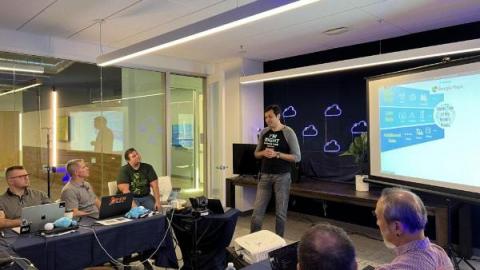Security | Threat Detection | Cyberattacks | DevSecOps | Compliance
Latest News
HardBit ransomware tells corporate victims to share their cyber insurance details
A ransomware outfit is advising its victims to secretly tell them how much insurance they have, so their extortion demands will be met. As security researchers at Varonis describe, a new strain of the HardBit ransomware has taken the unusual step of asking targeted companies to spill the beans of whether they have cyber insurance (and the terms of that insurance) anonymously.
Elastic on Elastic: How InfoSec uses the Elastic Stack for vulnerability management
Supply Chain Security: Sigstore and Cosign (Part II)
The ability to sign and verify the integrity and origin of software artifacts, such as Docker images, is critical to supply chain security. Let's try Sigstore, a new standard that promises to make this process much easier.
What Is System Hardening?
Complex cyberattacks dominate the headlines, making breaches seem sophisticated. In reality, most hacks are unbelievably simple and involve attackers targeting well-known configuration security gaps. In fact, cyberattacks are rather common. According to IBM, 83% of companies have experienced more than one breach while in operation.
The security concerns of a JavaScript sandbox with the Node.js VM module
Were you tasked with building a product that requires the execution of dynamic JavaScript originating from end users? You might think building it on-top of Node.js VM module is a viable way to create a JavaScript sandbox. In this article, we’ll learn why that’s far from being a recommended approach and the security implications of doing so. Every now and then there’s a project that challenges the rudimentary and routine backend development. APIs? Message queues?
Ransomware Families Bringing Home the Biggest Security Risks
33 Shell Plugins and counting!
I’m always amazed at just how quickly the developer community gets things done. Case in point: Just weeks after we launched 1Password Shell Plugins, we’re now 33 plugins strong… 14 of which were built by you, the developer community. 🤯
Making Operations More Agile and Efficient with a Digital Twin
On January 25, Forward Networks was honored to host Cloud Field Day 16. We especially enjoy working with the delegates because of their industry experience and objective viewpoints; in fact, we launched our product at a Networking Field Day in 2017. This blog is the first in a series covering our Cloud Field Day 16 presentations.











